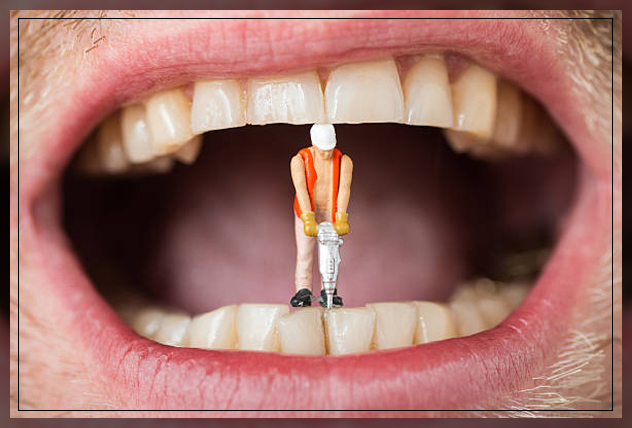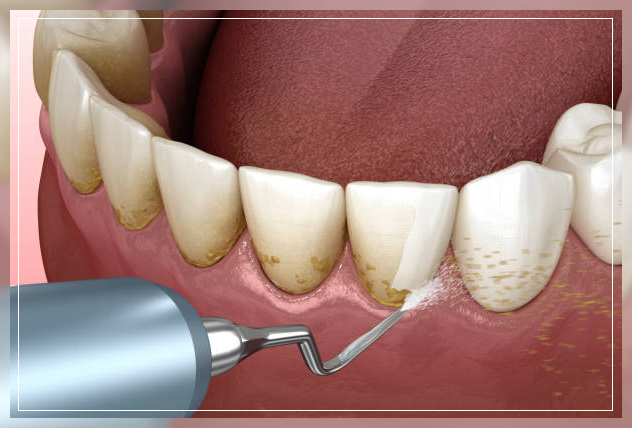Do you have a missing tooth and are considering a bridge to replace it? If so, then you may be familiar with the dental calculus bridge. This revolutionary technique quickly becomes one of the most popular ways to replace missing teeth.
It is minimally invasive, requires no supports like crowns or implants, and can last many years. But what is a dental calculus bridge, exactly?
In this blog post, we will explain what it is and how it works to help restore your smile! Keep reading if you want to learn more about the benefits of using a dental calculus bridge to fill teeth gaps.
What is calculus bridge, and how it affects your dental health?

A dental calculus bridge is a type of prosthetic device that can be used to replace missing teeth. It consists of two components: the abutment, which is anchored to adjacent teeth, and the pontic, which replaces the missing tooth.
The pontic is made from porcelain or metal alloys and looks natural. The abutment is an anchor point for the bridge, typically made from titanium or gold.
When it comes to dental health, having a missing tooth can cause significant problems if not addressed properly. Not only does it affect your smile aesthetically, but it also changes the way you eat and talk.
A dental calculus bridge will help restore proper function to your mouth by replacing the missing tooth and maintaining your bite alignment.
Furthermore, it helps preserve the health of the surrounding teeth and gums as it keeps bacteria from entering them.
Types of calculus bridges and their causes
1. Fixed Dental Bridges
Fixed dental bridges are the most common bridge used to replace missing teeth. This is when a dentist uses crowns on adjacent natural teeth or implants to anchor a false tooth in place.
It's a permanent solution that requires little maintenance and can last many years.
2. Removable Partial Dentures
Removable partial dentures are another option for replacing missing teeth, but this time they require more maintenance than fixed bridges.
They consist of replacement teeth attached to a plate or frame, then held in place by metal clasps that attach to the remaining natural teeth.
The prosthesis is made to be removable so that it can be easily removed and cleaned.
3. Implant-Supported Bridges
Implant-supported bridges are the most permanent solution for replacing missing teeth as they involve surgically inserted implants in the jawbone to act as anchors for a false tooth.
This type of bridge is more costly, but it is also more secure and will provide you with long-term results that are aesthetically pleasing.
The causes of missing teeth can vary greatly, ranging from decay or disease to trauma or genetics. However, regardless of the cause, a dental calculus bridge can help restore your smile and dental health by replacing lost teeth.
Before making any decisions, you must talk to your dentist about which type of bridge best fits your needs. With proper care and maintenance, a dental bridge can last many years and help you achieve the smile of your dreams!
Symptoms of a calculus bridge
A calculus bridge may not be immediately noticeable, but there are some telltale signs that you should look out for.
If you notice any of the following symptoms, it's important to talk to your dentist about whether or not a dental calculus bridge is right for you:
-Pain or discomfort when biting down;
-Chips, cracks, or discoloration in the area where the missing tooth was;
-Difficulty eating certain foods due to lack of support from surrounding teeth; and
-Changes in your ability to speak clearly due to improper alignment of adjacent
teeth.
If any of these symptoms are present, getting a proper diagnosis from your dentist is important to determine if a dental calculus bridge is the best solution for restoring your smile.
Risk factors for developing a calculus bridge
1. Poor Oral Hygiene
Poor oral hygiene is among the most common risk factors for developing a calculus bridge. Not brushing and flossing regularly can lead to tartar buildup on your teeth, which increases the risk of decay and disease.
Cavities can form and weaken your teeth without proper care, making them more likely to fall out or need to be replaced with a bridge.
2. Accidents or Injury
Accidents or injuries to the mouth can also increase your chances of needing a dental calculus bridge.
For instance, if you suffer from a sports-related injury affecting your jaw or teeth, you may experience damage that requires restoration with a bridge.
3. Genetics
In some cases, genetics may play a role in developing missing teeth that require replacing with a bridge.
If you have family members who have experienced tooth loss, you may be more likely to develop the same problem.
4. Diseases
Certain diseases can also increase the chances of needing a dental calculus bridge. For example, if you suffer from diabetes or heart disease, your gums may be more susceptible to gum disease, one of the leading causes of tooth loss.
Taking steps to reduce your risk of developing a calculus bridge or other dental issues is important. Make sure you brush and floss regularly, wear safety gear while playing sports, and visit your dentist for regular checkups.
With proper care and maintenance, you can help prevent missing teeth and maintain a healthy smile for years!
Treatment options for a calculus bridge

1. Dental Cleaning
The first step in treating a dental calculus bridge is to get a professional dental cleaning. This will help remove any buildup of plaque and tartar that may be present on the teeth, which can worsen decay and cause further damage if not addressed promptly.
2. Fillings
If there are cavities on the teeth, your dentist may recommend fillings as part of the treatment for a calculus bridge. Fillings can help protect and strengthen the teeth as well as prevent further decay from occurring.
3. Crowns
Another option is to use crowns to replace missing teeth or support bridges. Crowns are made from porcelain or metal and are designed to fit over existing teeth to improve aesthetics and functionality.
4. Implants
If fixed dental bridges aren't an option, implants may be recommended. Implants involve surgically inserting small posts into the jawbone that provide a stable foundation for bridges or false teeth. This method requires more time and money but is a permanent solution for missing teeth.
5. Dentures
Dentures are a removable solution to replacing missing teeth and may be recommended if other options are unsuitable or not feasible. They consist of false teeth attached to a plate or frame, which can be removed and replaced easily.
Overall, many treatment options for calculus bridges depend on the individual's needs and preferences.
Prevention tips to avoid getting a calculus bridge
1. Practice Good Oral Hygiene: One of the best ways to avoid developing a calculus bridge is to practice good oral hygiene.
This includes brushing and flossing your teeth at least twice daily, using mouthwash, and visiting your dentist regularly for checkups and cleanings.
2. Avoid Sugary Foods: Eating too many sugary foods can increase the risk of tooth decay, so limiting consumption of these foods and drinks is important.
Sugary snacks should especially be avoided in between meals as this increases the chances of plaque buildup on your teeth, which can lead to decay.
3. Wear A Mouthguard: If you play contact sports or engage in activities that put you at risk of a facial injury, wearing a mouthguard is important. This will help protect your teeth from damage and prevent needing a dental bridge or other treatments.
FAQs
What is a dental calculus bridge?
A dental calculus bridge is a revolutionary technique used to replace missing teeth. It involves attaching the new artificial tooth directly to the existing healthy teeth without requiring additional support, such as crowns or implants.
How long will my dental calculus bridge last?
With proper maintenance, your dental calculus bridge should last for many years. The longevity of your bridge will depend on how well you take care of it with regular brushing and flossing and regular visits to your dentist for cleanings and check-ups.
Is getting a dental calculus bridge painful?
With modern advances in dentistry, getting a dental calculus bridge is usually relatively painless. Your dentist may need to numb the area near the missing tooth, but this is usually done quickly and effectively.
Conclusion
A dental calculus bridge is a great option for replacing missing teeth. It's minimally invasive, requires no supports like crowns or implants, and can last many years. And best of all, it can help you restore the look and feel of your natural smile!







